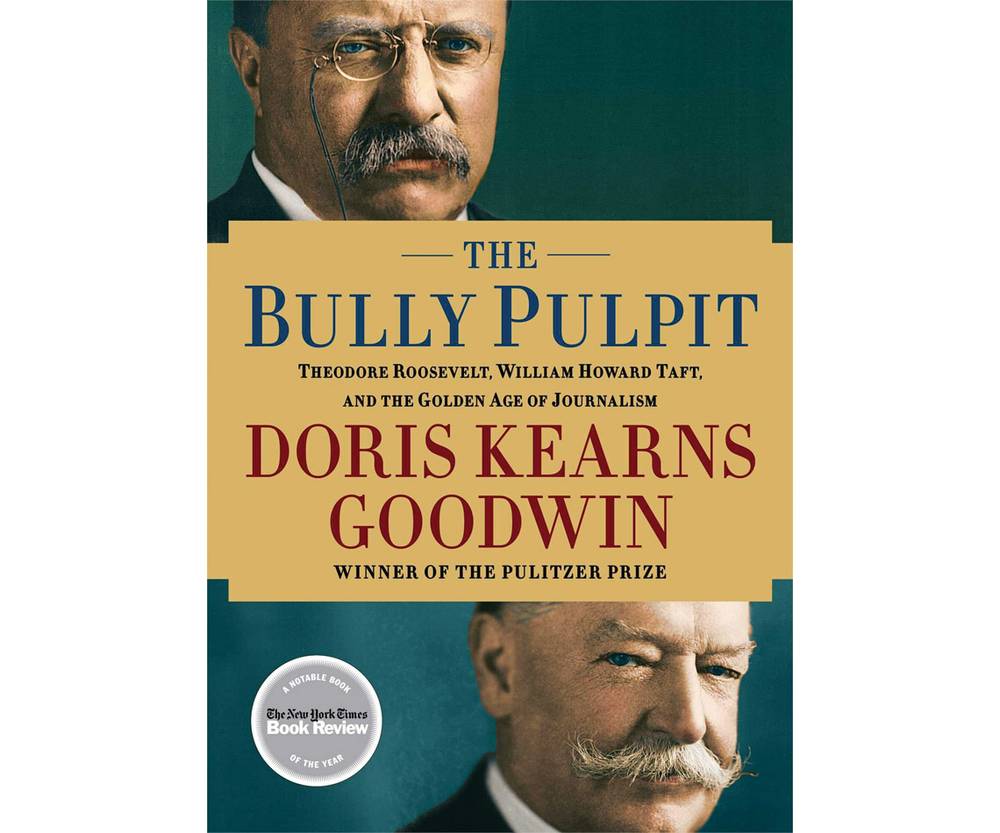
The Bully Pulpit By Doris Kearns Goodwin, $40.
Teddy Roosevelt landed on my Facebook feed the other day. A friend’s “like” had lodged a meme there, showing the long-coated T.R. beside an excerpt from a 1912 speech, insisting “the great corporations … can only be held in check through the extension of governmental power.”
The 26th president has become a darling of the left as a Republican with a liberal heart. When he made that remark, though, he was the presidential candidate of the Progressive Party, which had made him its candidate after he’d failed to wrest the Republican nomination from William Howard Taft, his handpicked successor as president. Roosevelt’s third-party bid against his old friend handed the 1912 election to Democrat Woodrow Wilson. As Doris Kearns Goodwin points out in The Bully Pulpit: Theodore Roosevelt, William Howard Taft, and the Golden Age of Journalism, Taft and Roosevelt together outpolled Wilson by 1.3 million votes.
Goodwin, a White House intern under Lyndon Johnson and later an LBJ biographer, has made relationships around presidents the focus of books such as No Ordinary Time—Franklin and Eleanor Roosevelt: The American Homefront During World War II (1995) and Team of Rivals: The Political Genius of Abraham Lincoln (2005). Her latest examines the early friendship and later rivalry of Roosevelt and Taft, but it’s also a study of the presidency finding its level, and its voice, in the popular media.
Both Roosevelt and Taft detested the Republican Party’s patronage politics, but only Roosevelt was temperamentally suited to publicity, starting in the New York state legislature in 1881. “Immediately, Roosevelt understood that the most effective means of circumventing the machine and transforming public sentiment was to establish a good rapport with the press corps,” Goodwin writes. Press accounts of his Rough Rider heroics in the Spanish-American War helped propel him to the vice presidency, and when he ascended to the presidency on William McKinley’s assassination in 1901, he invited journalists to the White House on his first day there.
It was, as Goodwin’s subtitle asserts, a “Golden Age of Journalism,” and she focuses on the writers associated with S.S. McClure’s eponymous magazine: Ida Tarbell, Ray Stannard Baker, Lincoln Steffens and William Allen White. The mercurial McClure’s team took after “the trusts,” corporate monopolies, and with their support Roosevelt wrung from Congress regulation of railroad rates, the first major assault on Republican “laissez-faire” ideology. Taft, too, had progressive victories but, lacking Roosevelt’s flair, discontinued weekly press conferences. He angered Roosevelt by firing Chief Forester Gifford Pinchot, and he unintentionally became the “conservative” in the 1912 election.
Today, of course, “laissez faire” is GOP gospel again, and muckrakers are rare. Roosevelt coined the term to disparage lesser practitioners, but few popular journalists doggedly scour records for damning evidence like Tarbell or Steffens. And the public is largely unwilling to digest anything more complex than social media memes.
Find more by Chuck Twardy at chucktwardy.com.







